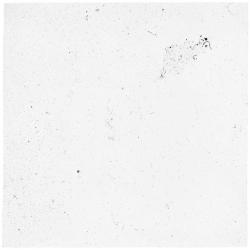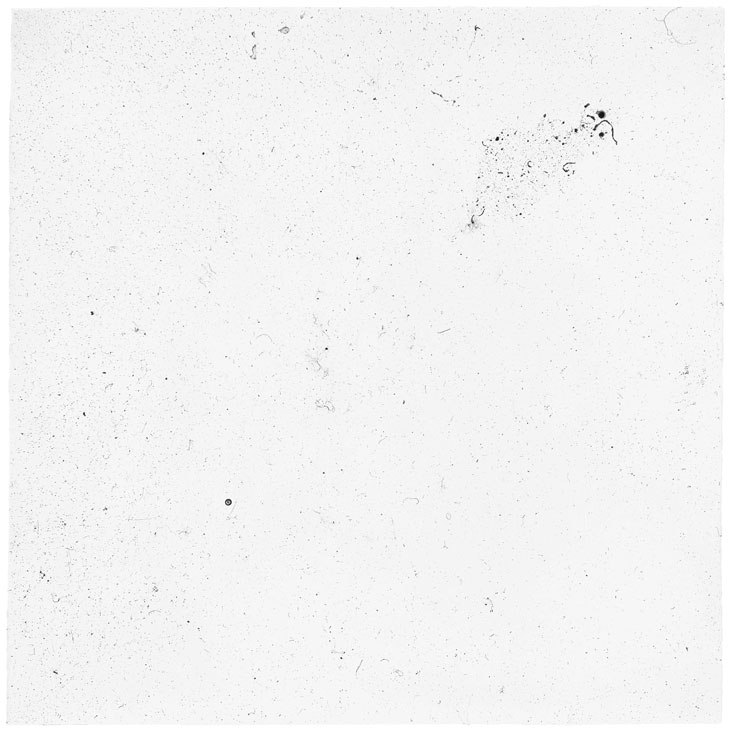
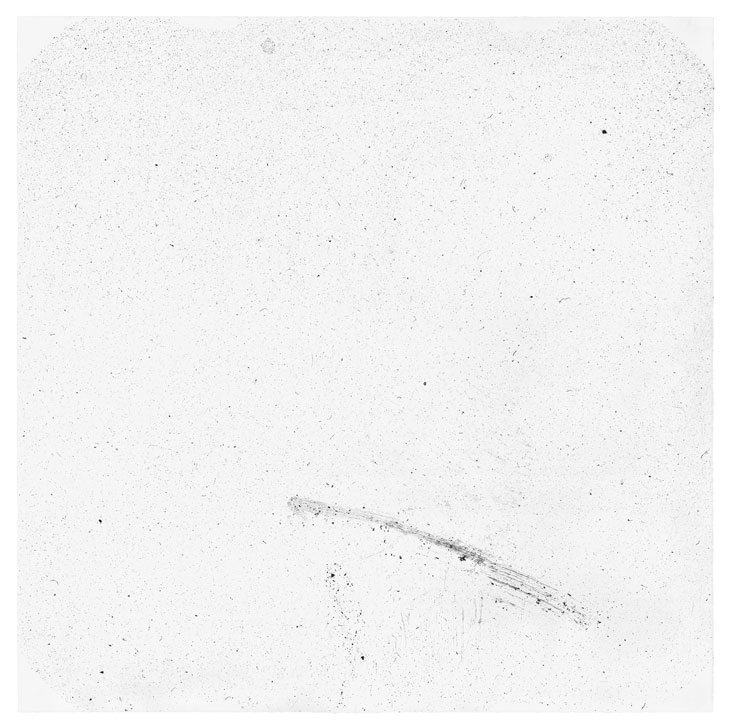
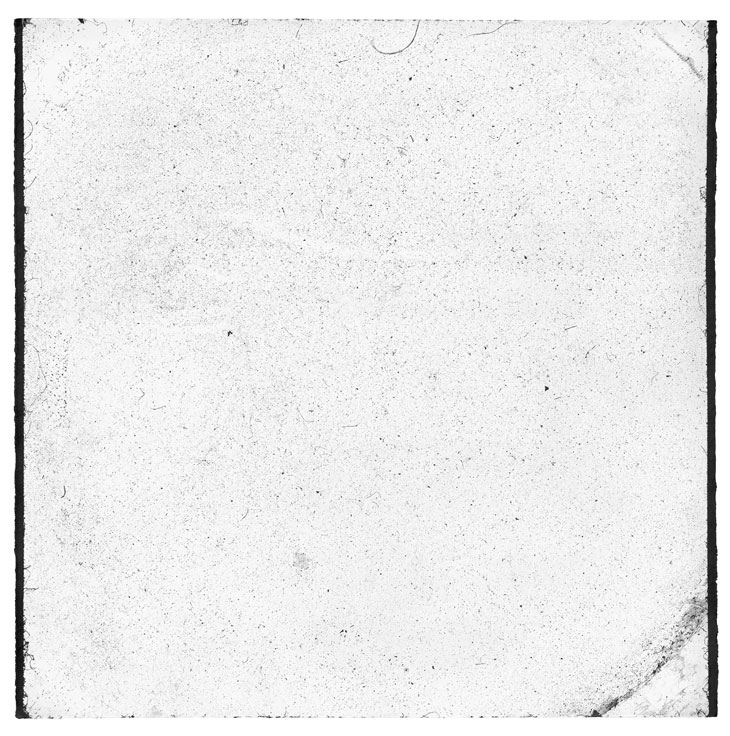
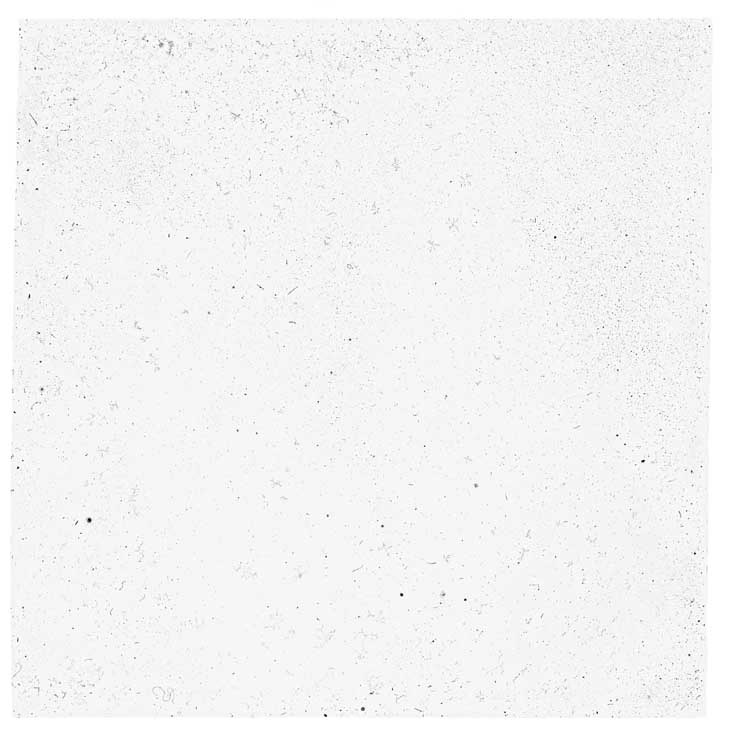
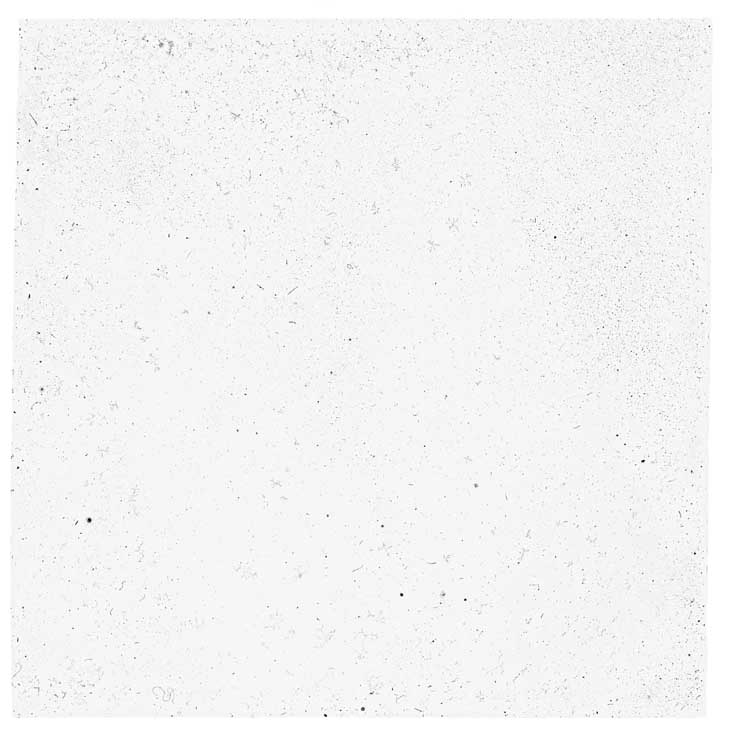

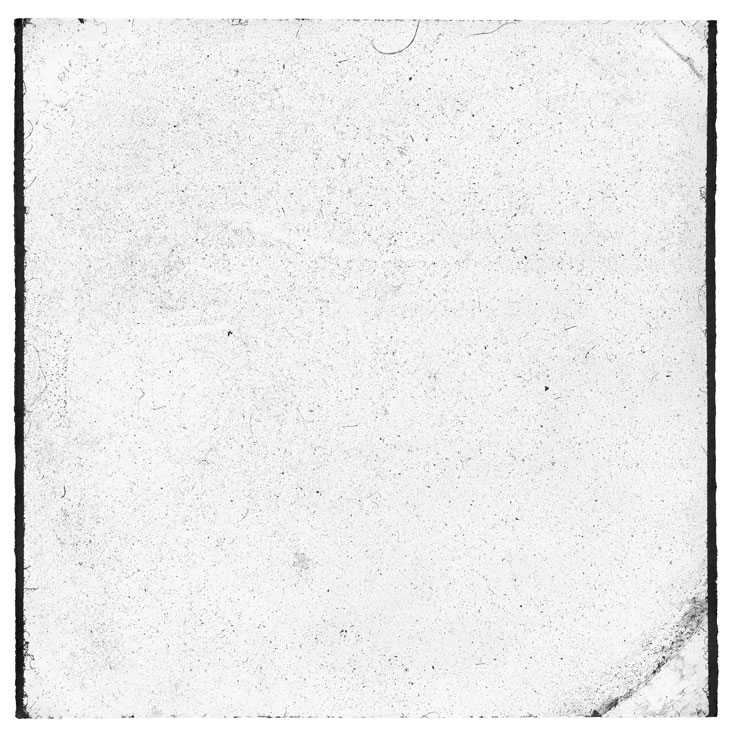
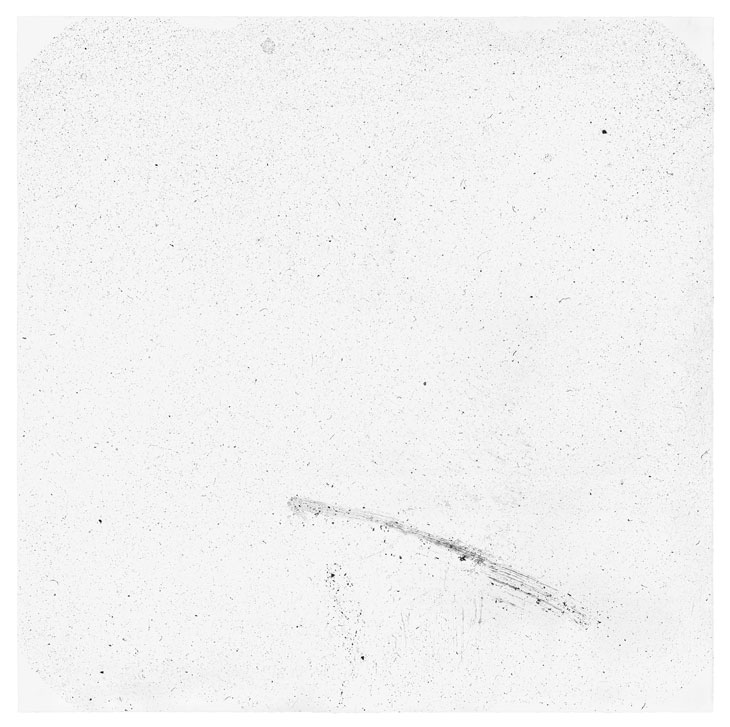
Klaus Mosettig
Klaus Mosettig’s meticulous approach to making images is, for him, “simply realistic drawing”, but his work’s uncanny reproduction of visual reality goes beyond mere imitation. Setting up a slide projector in his studio, Mosettig tweaks it to focus on the glitches and scuffs of the lens itself, and painstakingly renders those deficiencies onto sheets of paper on which the image is projected.
Each drawing is named after the projector used – Pradolux, Rollei, Pradovit – becoming melancholy self-portraits of an obsolete technology. The use of slide projectors as a way of reproducing a found image in a flattened and disinterested way has its roots in Roy Lichtenstein’s pop art, and is a trope of post-pop painting, but Mosettig’s work is interested not in the image itself but its means of reproduction: the way in which an image comes to life.
It’s appropriate, then, that his drawings resemble the reaction of the eye when faced with a blank space. The tiny hairs and specks of dust recall floaters, the shadows of red blood cells that bob across one’s vision when the eye is still, as when one looks closely at a work of art in a white-walled gallery space. In this sense, Mosettig’s work lives in the gap between the eye and the brain, between a thing seen and a thing understood. Its power lies in its unwillingness to close that gap.
ext by Ben Street





